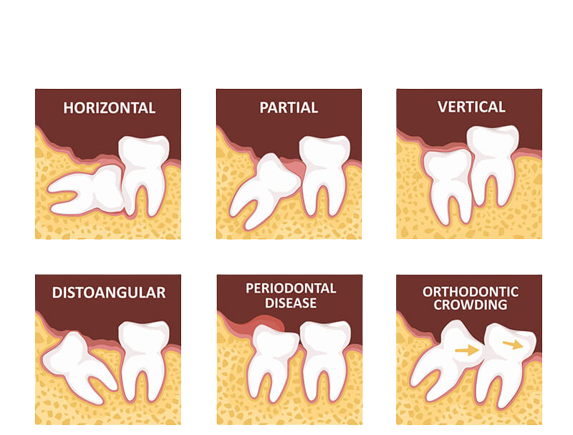Hours of Operation
- Mon-Sat 9:00am – 6:00pm
Sunday Closed
Contact Info
-
Phone: (613) 733-8000
Wisdom Teeth Extraction
Wisdom tooth extraction is a surgical procedure to remove one or more wisdom teeth — the four permanent adult teeth located at the back corners of your mouth on the top and bottom. A dental implant is a metal post that replaces the root portion of a missing tooth. An artificial tooth (crown) is placed on an extension of the post (abutment) on the dental implant, giving you the look of a real tooth.
Wisdom teeth are the last of your teeth to appear (erupt) in the mouth. Sometimes a wisdom tooth becomes stuck below the surface of your gums (impacted), and grows at an odd angle, possibly causing complications.

WHAT YOU CAN EXPECT
A wisdom tooth extraction is almost always performed as an outpatient procedure. This means that you go home the same day. However, if your tooth is deeply impacted or if the extraction requires an in-depth surgical approach, your dentist may suggest you see an oral surgeon. Your dentist or oral surgeon will use local anesthesia to numb the area of extraction. If you have local anesthesia, your brief recovery time is likely in the dental chair. As you heal from your surgery, follow your dentist’s instructions on:
- Bleeding
- Pain management
- Swelling and bruising
- Activity
- Beverages
- Food
- Cleaning your mouth
- Tobacco use
- Stitches
WHAT YOU CAN EXPECT
You probably won’t need a follow-up appointment after a wisdom tooth extraction if:
- You don’t need stitches removed
- No complications arose during the procedure
- You don’t experience persistent problems, such as pain, swelling, numbness or bleeding — complications that might indicate infection, nerve damage or other problems